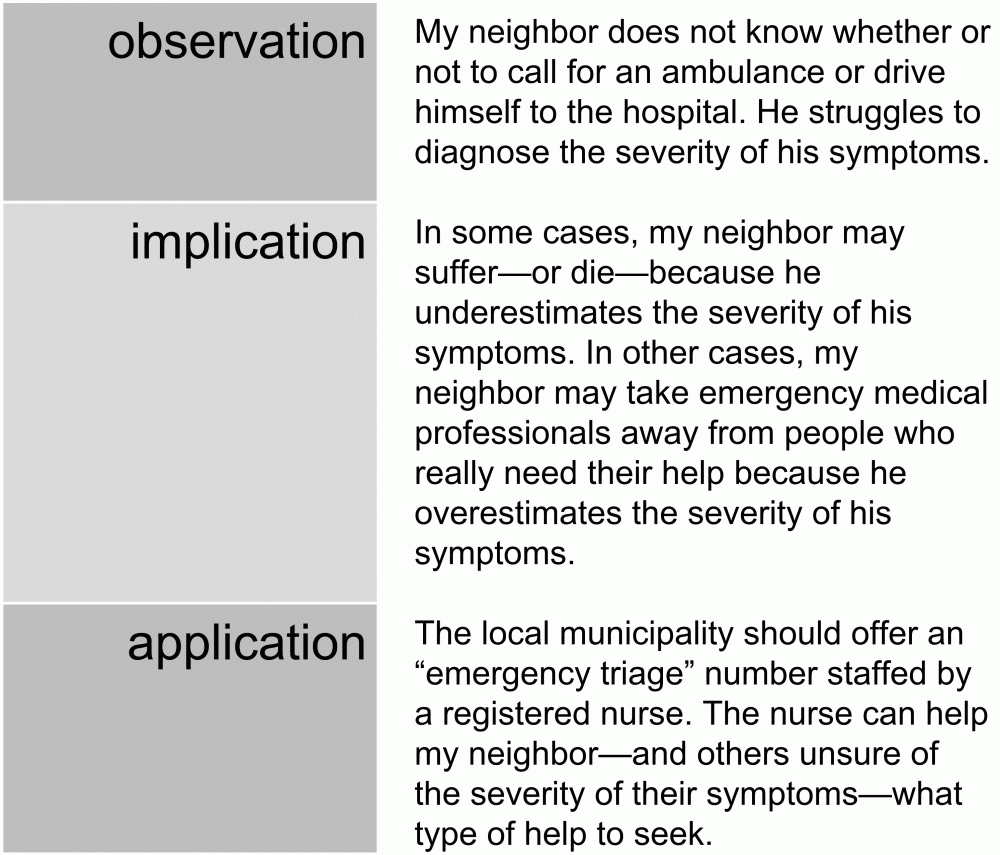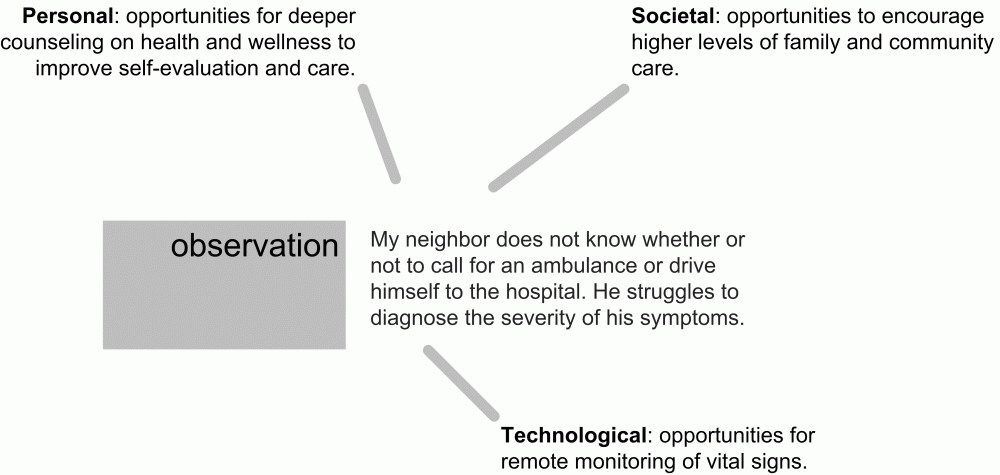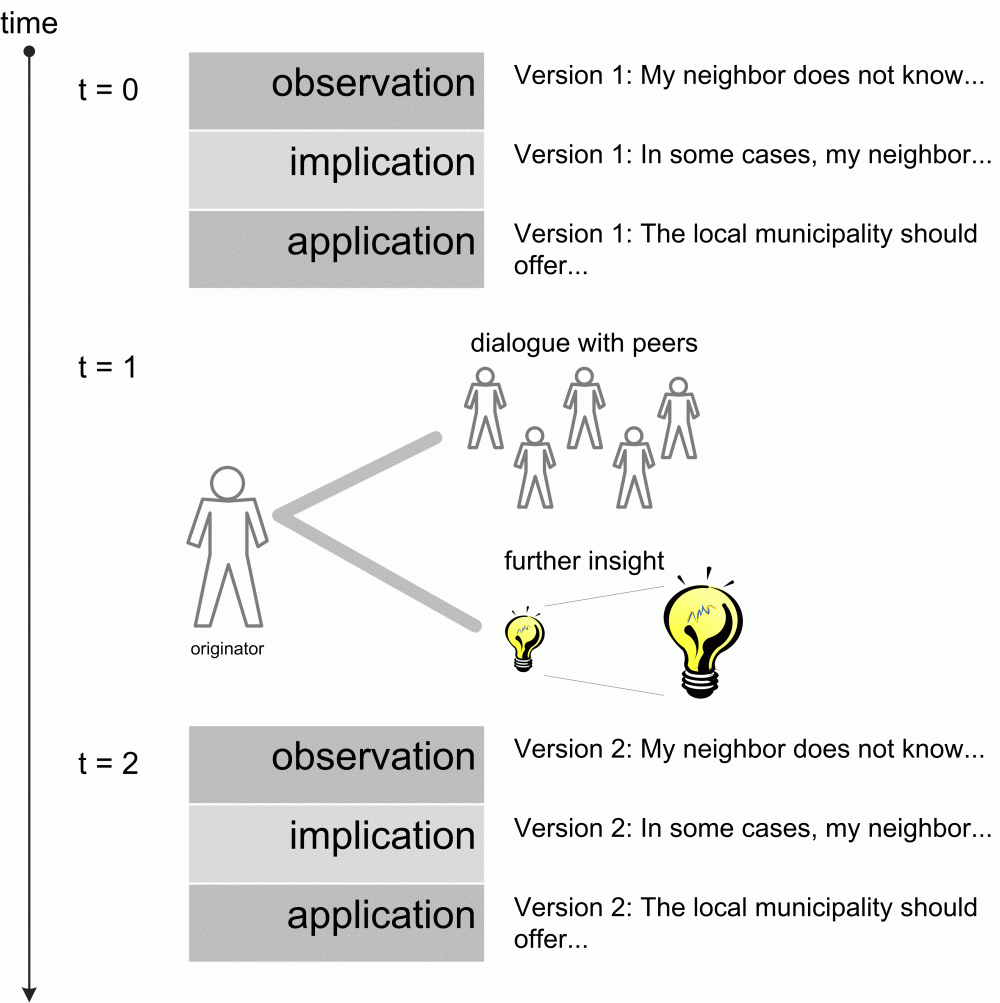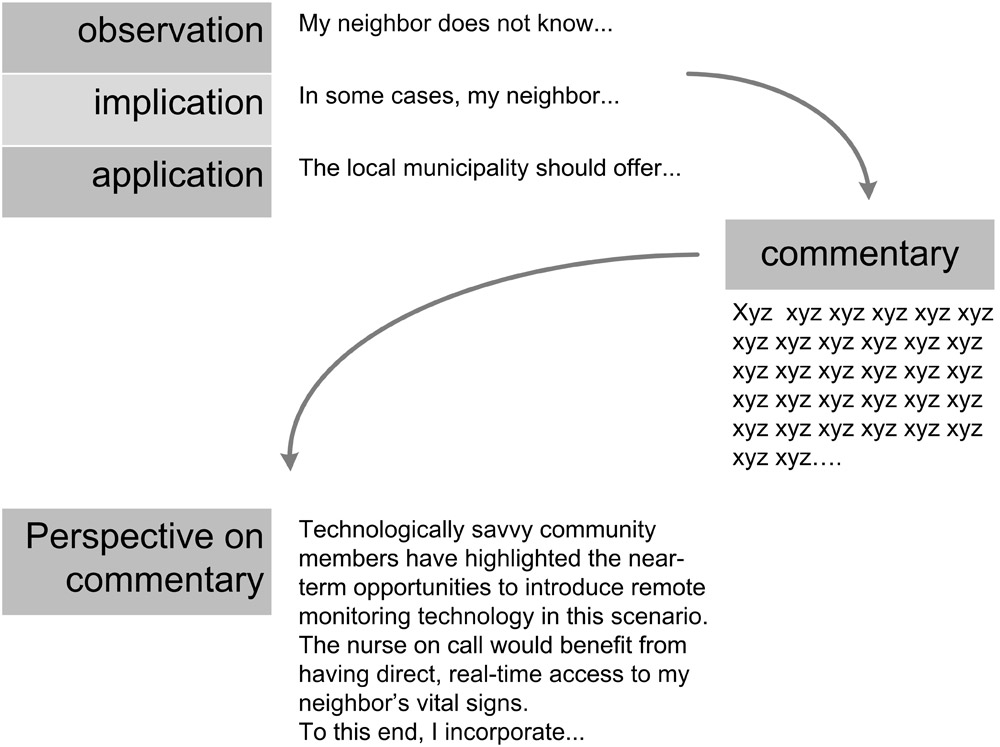By: Doug Collins
What elements comprise a fully formed idea? How might originators capture the evolution in their thinking about their ideas over time? Innovation architect Doug Collins—older and, debatably, wiser—revisits his thinking on this subject.
Many groups coin abbreviations and acronyms as ways to help them decide what to do. Project managers use the SMART mnemonic to set program goals: Specific, Measurable, Attainable, Realistic and Time-sensitive. Pediatricians use the Apgar score to help them assess the health of newborns: Appearance, Pulse, Grimace, Activity, and Respiration.
People who practice collaborative innovation have their own shorthand, as well. For idea capture they use OIA: observation, implication, and application. Chris Miller, who founded innovation consultancy Innovation Focus, developed this approach as part of his Hunting for Hunting grounds method, through which participants identify new opportunities for growth. I explored the OIA approach’s use in collaborative innovation in an earlier article. An example of OIA follows (figure 1).
Figure 1: example of OIA
OIA enables originators to capture and share fully formed ideas such that their fellow community members and stakeholders have enough information to comment, assess, and decide next steps. I have found, too, in working with clients that OIA offers further benefits beyond enabling people to capture their ideas in full…
- The simple act of capturing observations and implications for each idea instills the basic discipline of innovative practice across the organization. Observational capture has for years served as the linchpin of scientific enquiry: witness the commonplace book and the modern equivalent, the lab notebook. Extending the practice to the community at large is a small, but important step in fomenting a culture of innovation. Our practices define our cultures.
- Observations and implications can lead to deeper forms of collaborative innovation and brainstorming. Practice leaders can, for example, explore grouping sets of observations to find deeper meaning across many individual insights. These deeper dives can lead to an infinite number of new applications (figure 2).
Figure 2: extending the observation in multiple new directions
I have found OIA to be universally applicable to all scenarios at the front end of innovation which require idea collection. People could build a thriving practice simply by convening the community to cast and recast insights gained through OIA.
A Lesson Learned: OIA Revisited
I have had the opportunity to watch a wide variety of organizations apply OIA in a wide variety of settings. A lesson that I have learned is that there is a temporal quality to the engagement on ideas. Someone has an insight. They capture their thinking with the OIA approach. They share their idea with peers in one or more virtual or physical settings. People react to the idea. Perhaps they have a different perspective on the nature of the observations. Do they see things differently? Perhaps their implication takes them in a different direction as a result. Perhaps they have different perspective on what the originator should do next—the application, relative to further exploring and implementing the idea in concept. A conversational thread develops.
Later, a second and a third person enter the conversation. Do they start with the original idea capture and then pursue the first commenter’s line of enquiry? That is, is there benefit to having the original idea stand forever as the pristine version, regardless of how the subsequent comments and findings may change to originator’s first thinking on the subject?
Or, do later participants start with what would be the most recent version of the idea? The implication here is that the originator commits to regularly updating their submission to reflect their most recent thinking on their idea. Changes to the initial version may come, for example, from further discovery by the originator or from dialogue with other interested parties (figure 3).
Figure 3: the evolution of an idea over time
Recommendation: Perspective on Commentary
Collaborative innovation differs from individual exploration primarily in that practitioners invite the larger community to contribute their insights to the question at hand and to provide perspective on the ideas that other share. To this end, accommodation should be made for the idea originator to share in summary form their perspective on the collaboration they experience in evolving their idea on the front end of innovation.
At the same time, organizations can derive value from seeing what spawned the originator’s initial thinking. What did they first see? Being able to follow the trajectory of the person’s thinking can prove enormously valuable in terms of both near-term comprehension and long-term collaboration.
To this end, the organization should make allowance for the contributor to share their perspective on the commentary. Figure 4 suggests a fourth field—perspective on commentary—that practitioners can provide idea originators who wish to respond to commentary and possibly incorporate community insight into their essential idea, as defined by OIA. OIA becomes OIA + PoC.
Figure 4: enable the originator to share their perspective on the commentary
No Idea Is an Island
The change from OIA to OIA + PoC, while seemingly minor, has significant implications for the practice. Many collaborative innovation communities, to their credit, provide idea originators with substantial, early-stage feedback on their thinking. Comment threads extend for pages. Post It notes migrate across the whiteboard and into the hall. Community members who arrive later in the discussion are left to leaf through lengthy strings. They wonder which perspectives the originator accepts and which they reject. Sponsors decide funding and resourcing by their understanding of the idea at hand.
To reduce ambiguity and to give the originator the opportunity to express their current perspective on their idea, give them space to capture the evolution of their thinking about their inspiration in summary form.
By Doug Collins
About the author:
 Doug Collins is an Innovation Architect who has specialized in the fuzzy front end of innovation for over 15 years. He has served a variety of roles in helping organizations navigate the fuzzy front end by creating forums, venues, and approaches where the group can convene to explore the critical question. As an author, Doug explores the critical questions relating to innovation in his book Innovation Architecture, Practical Approaches to Theory, Collaboration and Implementation. The book offers a blueprint for collaborative innovation. His bi-weekly column appears in the publication Innovation Management.
Doug Collins is an Innovation Architect who has specialized in the fuzzy front end of innovation for over 15 years. He has served a variety of roles in helping organizations navigate the fuzzy front end by creating forums, venues, and approaches where the group can convene to explore the critical question. As an author, Doug explores the critical questions relating to innovation in his book Innovation Architecture, Practical Approaches to Theory, Collaboration and Implementation. The book offers a blueprint for collaborative innovation. His bi-weekly column appears in the publication Innovation Management.




